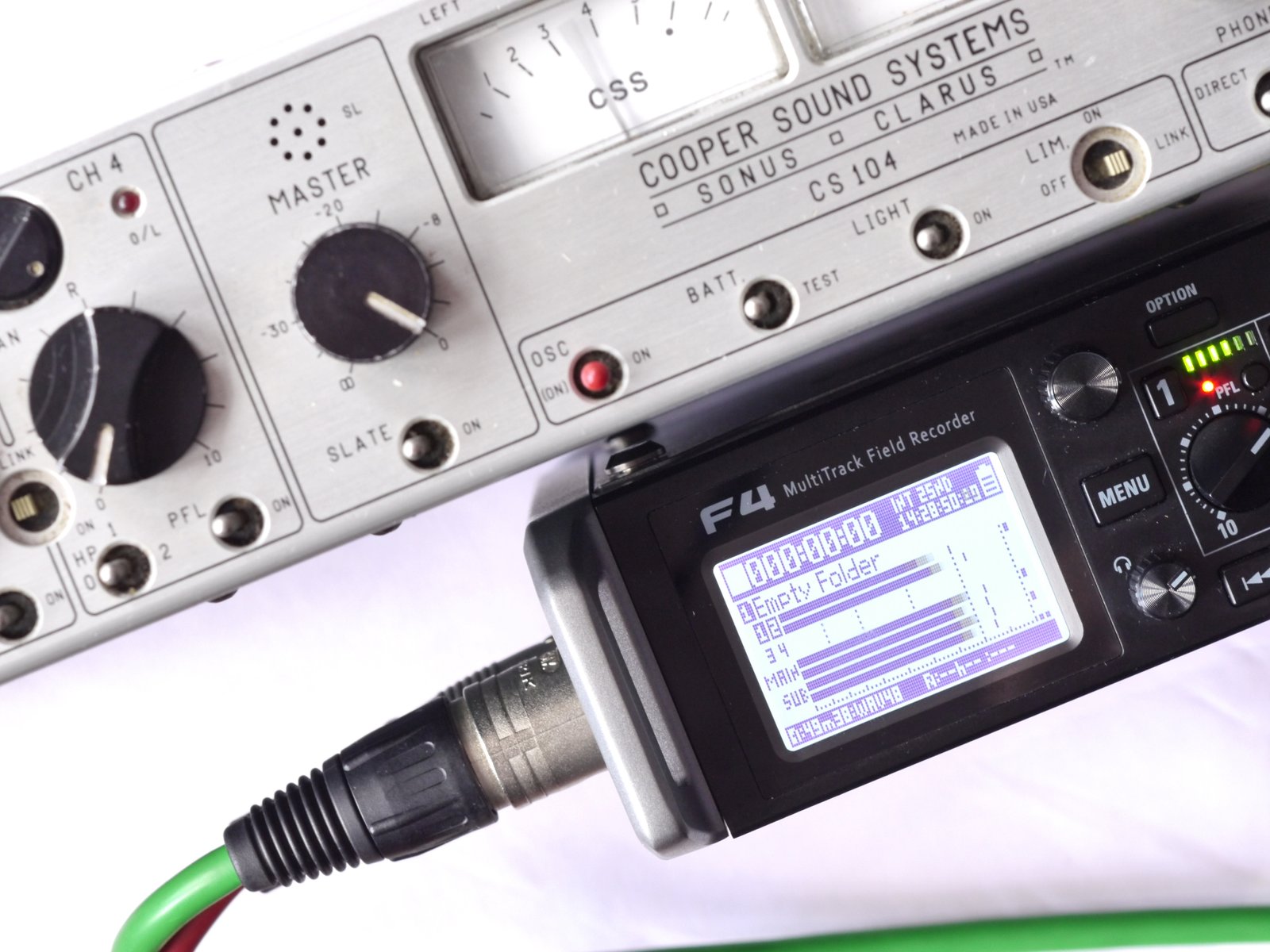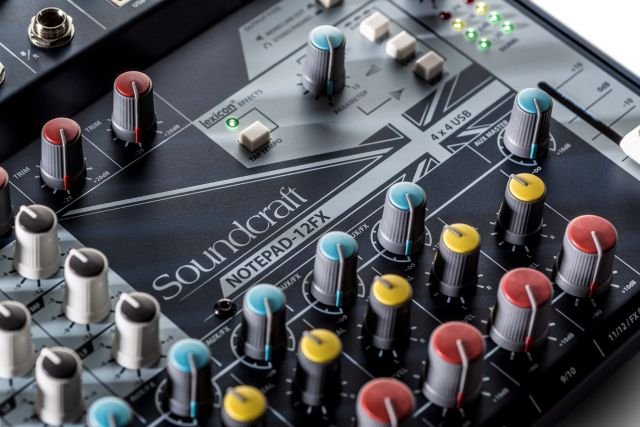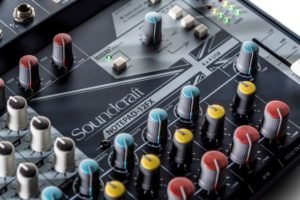But value of course is closely related to performance – so we’ll have to return to the value issue having had a god look at the new Notepad. The 12FX, offers four channels of mono mic/line input on combi jacks. Two stereo line inputs on quarter inch jack. Stereo line inputs on phonos which doubles as a stereo input via USB from the computer. The audio over USB is combined with the audio from the physical phono connectors. And a stereo effects return on quarter inch jacks which overplug the normal function of the channel which is the return from the on board effects. All in all a decent amount of input in a package little bigger than a hefty hardback. All this sits in a solid steel top plate that gives the body of the mixer a feeling of tough resiliance. The Mic inputs have permanent 48 phantom – ribbon mics beware! Each mic channel has a high pass filter at 100Hz and three band EQ. Inputs 1 and 3 can be switched to Hi Z allowing you to plug one of your many guitars in directly. The four mic channels and the two stereo inputs have trims pots for the input gain with up to 60 dB of gain on the mic channels and plus or minus twenty dB on the stereo line inputs.
On the output side the main output is available on XLRs which are very welcome at this price point, there’s a mono aux output on quarter inch jack. This output is post the Aux Master and can be switched between a mono line out and a stereo headphone output. The Aux out send is pre fader and also pre the pan and balance controls. Finally the headphone output on quarter inch jack with its own volume control. The output is switchable between the master output and channels 3 and 4 of the USB output. There’s a couple of points here, First the output is beefy enough to drive the 250 Ohm Beyerdynamic DT1990s loud enough for Ted Nugent. Yes it goes up to 11, handy for momentary checking a tricky section of the mix. Careful though the headphone output is pre the main fader. So you could be mixing the Jam reunion gig and find that you have inadvertently knocked the main fader back and you wouldn’t hear that in the headphones. To help avoid just such a situation you do get four level bargraph led meters on the output and the four mic input channels have a peak led to warn you when you are over driving the inputs.
Each mic channel features a simple three band eq. The high and low bands are shelves at 12.5 Khz and 80 Hz respectively while the mid band at 2.5 Khz is an asymmetric curve, boost is wide while cut is narrow for your notching. A nice little touch I thought.
These days Soundcraft are part of the Harman group – now owned by Samsung – and they take their place alongside such luminaries as AKG, Studer and Lexicon. The spin off here is that the Notepad’s effects sport the Lexicon effects label. The effects bus shares a send with the aux bus. Despite the manual describing the effects send as post fade I found both Aux send and Effects send to be prefade. The Aux bus goes through the Aux master while the effects are sent directly to the processor from each individual channel.
You get three effects with the Notepad reverb, delay and chorus. Each effect is controlled by a latching button and as the effects combine you have a total of six combinations. If you latch all the buttons down you get the Karaoke setting. Each effect has parameter control on a single knob. Note this doesn’t go from 100% dry to wet – you always get some effect when engage the send. Delay offers you a slap back echo up to about a second and turning the parameter pot will get you up to seven repeats. Reverb varies from small live room up to a Vincent Price sized auditorium. The good news is the effects are not terrible and neither are they noisey in fact they are perfectly usable.
The final major feature of the Notepad is the USB connectivity. It’s a four in four out interface which means you can neatly track all four mic inputs for instance. In PC world USB outputs one and two from the desk are fixed as direct outputs of channel inputs one and two, while three and four can be configured to be inputs three and four, stereo inputs five and six or seven and eight or finally main outputs left and right. In MacOS world you get the the direct outputs of channels 1 and 2 and the main mix prefader on 3 and 4. No drivers for MacOS required. Soundcraft are working on control panel for MacOS to mimic the PC functionality. The PC driver installed painlessly on my Win 10 system. On the return side you have DAW outputs one and two on stereo channel nine and ten and three and four available at the headphone monitoring.
To be honest it would be churlish to complain about any aspect of the Notepad-12FX, it packs a ridiculous amount of features for the money, tuck it under your arm and it has enough flexibility and connectivity to cope with many basic gigs or sit on the desk plugged into your DAW as an interface and problem solver. A notable bargain.




